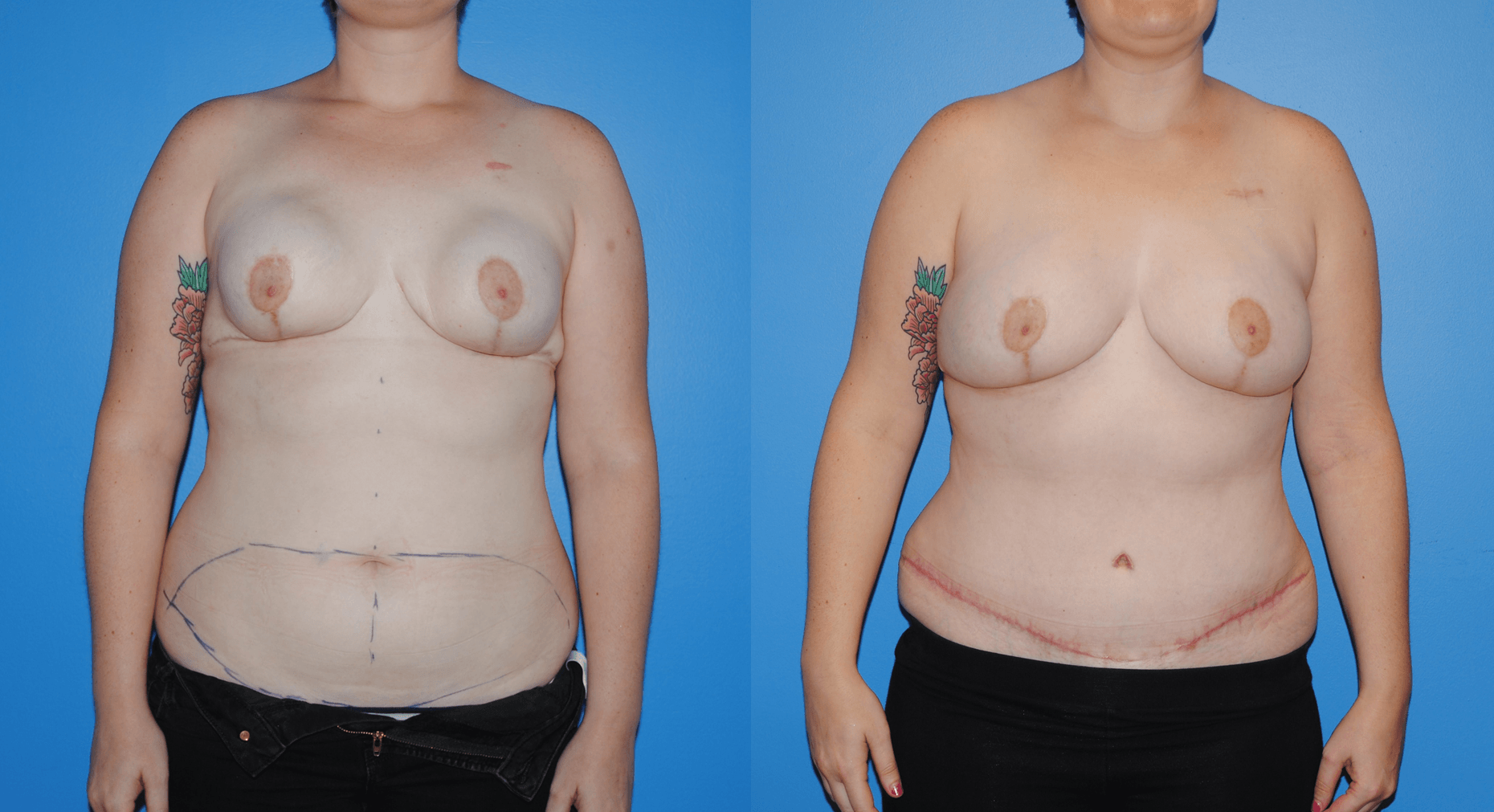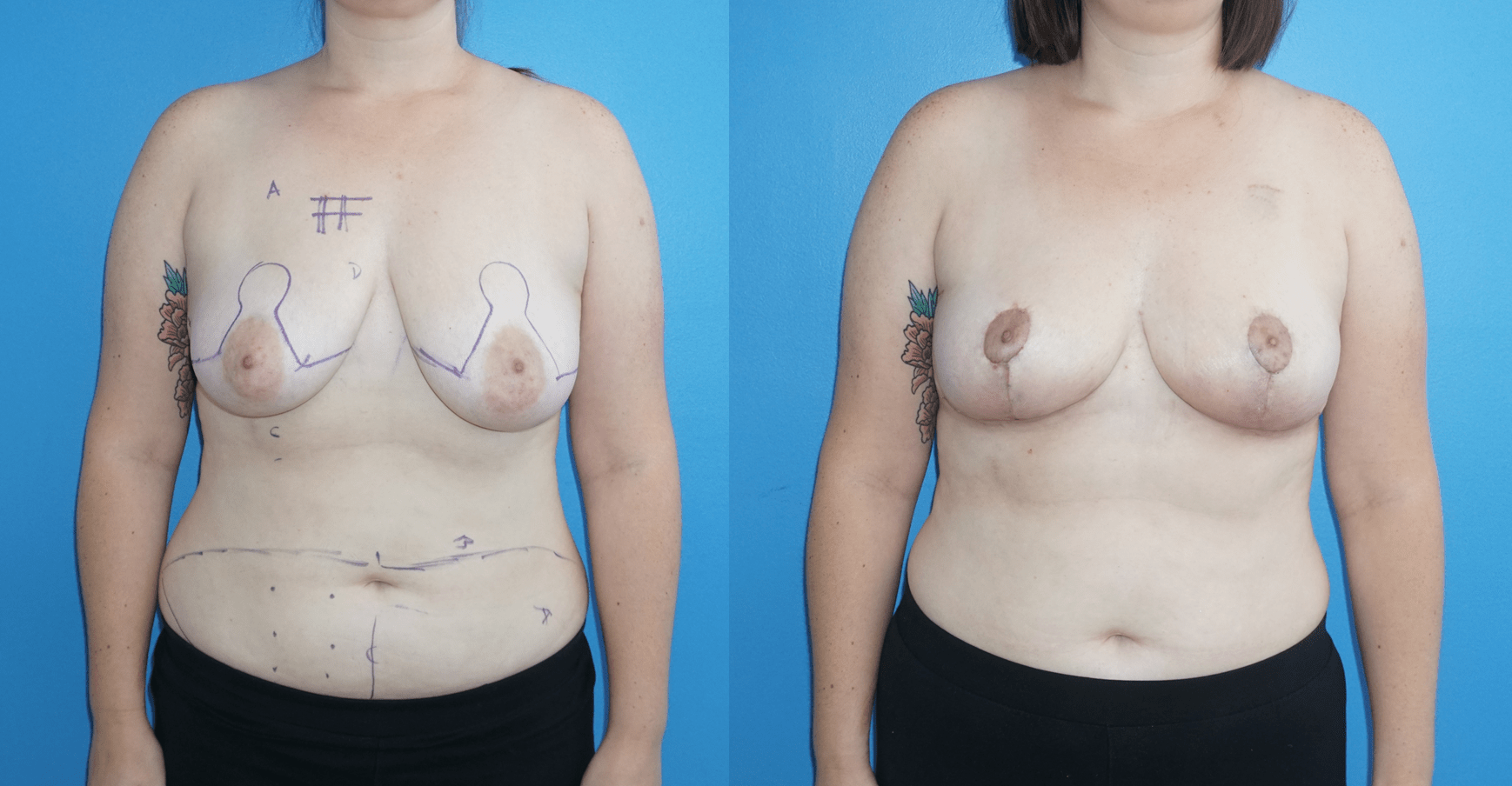There are several oncoplastic techniques that are used to reconstruct the breast following lumpectomy for breast cancer. These oncoplastic techniques can be utilized in conjunction with DIEP flap reconstruction for mastectomy in sequence. Patients can undergo lumpectomy for breast cancer with oncoplastic reconstruction. The staging of the lumpectomy and oncoplastic reconstruction can place a ptotic nipple areola complex in a more favorable position to preserve the nipple areola complex at the time of a mastectomy at a future date.
The ptotic breast makes it difficult to preserve the nipple areola complex during a mastectomy procedure. The nipple areola complex can be lifted in a mastopexy procedure and then followed by a mastectomy to preserve the nipple areola complex that has been lifted. After a certain period of time the nipple areola complex revascularizes and can remain viable following a mastectomy and in a more favorable aesthetic position. The photograph above depicts the breast following oncoplastic reconstruction of a lumpectomy.
After approximately 3 months, the nipple areola complex revascularizes and has a better chance of remaining viable following mastectomy. Viability is more likely if the nipple areola complex and skin closures are not stressed from underlying tension. Allowing the nipple areola complex to heal with a tissue expander in place that is not fully expanded gives the blood supply a chance to revascularize and optimize nipple areola complex viability. The nipple areola complex following nipple sparing mastectomy tends to have less projection and a more slightly pale color.
The photograph below on the left shows the reconstruction at the stage after mastecotmy and with tissue expanders in place. The lower abdominal tissue is then transplanted to the chest. The lower abdominal donor site is then closed in a fashion similar to an abdominoplasty. The photo below on the right shows the reconstruction following tissue expander removal and reconstruction with abdominal based DIEP flaps. Abdominal scars are often red when less than one year old and tend to fade with time.



